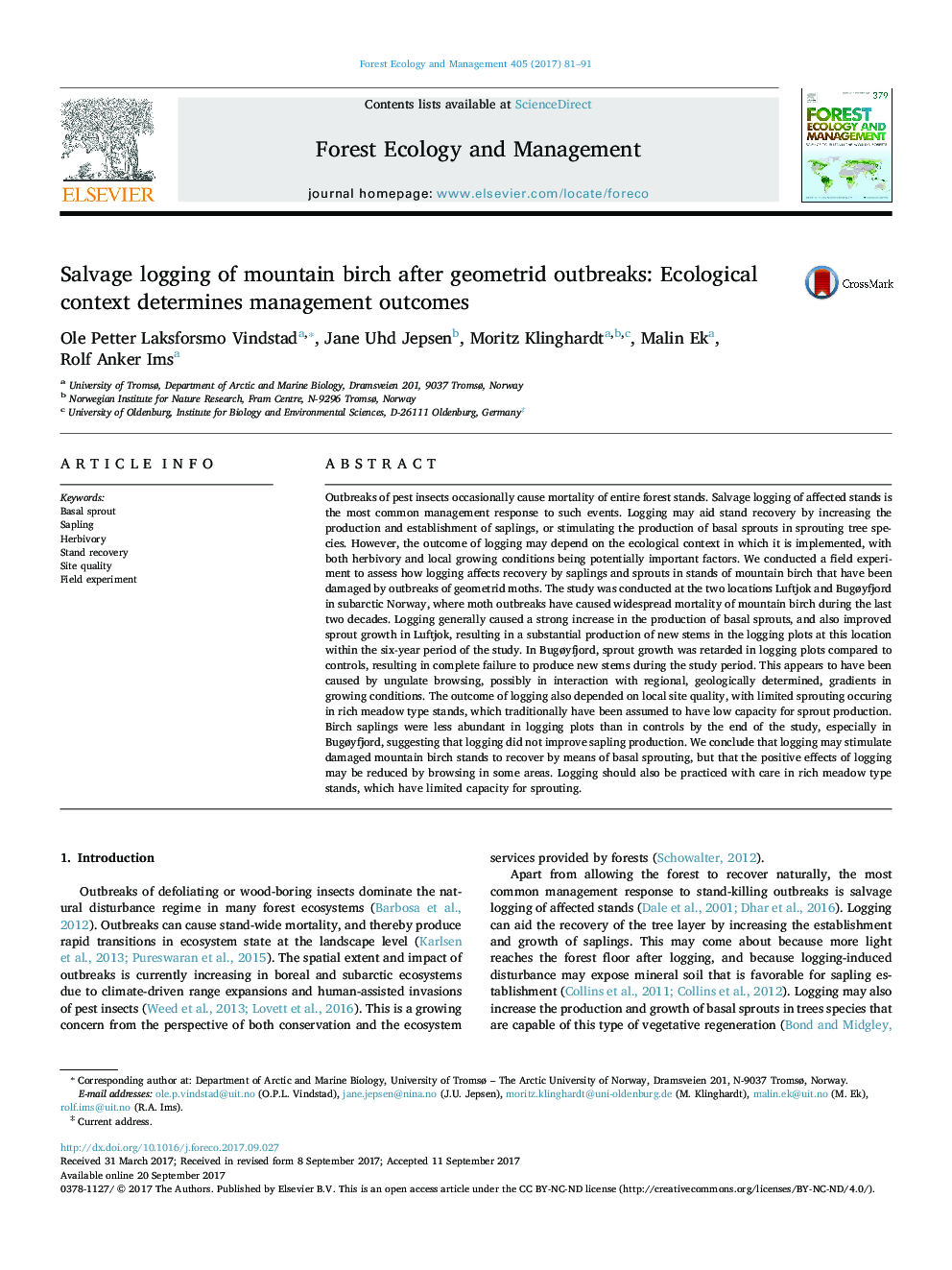| کد مقاله | کد نشریه | سال انتشار | مقاله انگلیسی | نسخه تمام متن |
|---|---|---|---|---|
| 6459053 | 1421353 | 2017 | 11 صفحه PDF | دانلود رایگان |
- Logging increases the production of basal sprouts in birch after moth outbreaks.
- Ungulate browsing appears to retard post-logging sprout growth in some areas.
- Rich meadow type birch stands have low capacity for sprouting after logging.
- The outcome of logging depends on ecological context (browsing and site quality).
Outbreaks of pest insects occasionally cause mortality of entire forest stands. Salvage logging of affected stands is the most common management response to such events. Logging may aid stand recovery by increasing the production and establishment of saplings, or stimulating the production of basal sprouts in sprouting tree species. However, the outcome of logging may depend on the ecological context in which it is implemented, with both herbivory and local growing conditions being potentially important factors. We conducted a field experiment to assess how logging affects recovery by saplings and sprouts in stands of mountain birch that have been damaged by outbreaks of geometrid moths. The study was conducted at the two locations Luftjok and Bugøyfjord in subarctic Norway, where moth outbreaks have caused widespread mortality of mountain birch during the last two decades. Logging generally caused a strong increase in the production of basal sprouts, and also improved sprout growth in Luftjok, resulting in a substantial production of new stems in the logging plots at this location within the six-year period of the study. In Bugøyfjord, sprout growth was retarded in logging plots compared to controls, resulting in complete failure to produce new stems during the study period. This appears to have been caused by ungulate browsing, possibly in interaction with regional, geologically determined, gradients in growing conditions. The outcome of logging also depended on local site quality, with limited sprouting occuring in rich meadow type stands, which traditionally have been assumed to have low capacity for sprout production. Birch saplings were less abundant in logging plots than in controls by the end of the study, especially in Bugøyfjord, suggesting that logging did not improve sapling production. We conclude that logging may stimulate damaged mountain birch stands to recover by means of basal sprouting, but that the positive effects of logging may be reduced by browsing in some areas. Logging should also be practiced with care in rich meadow type stands, which have limited capacity for sprouting.
Journal: Forest Ecology and Management - Volume 405, 1 December 2017, Pages 81-91
